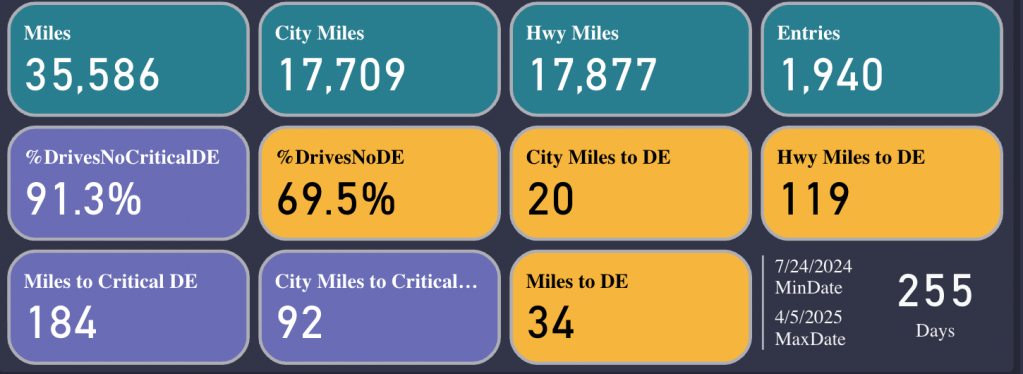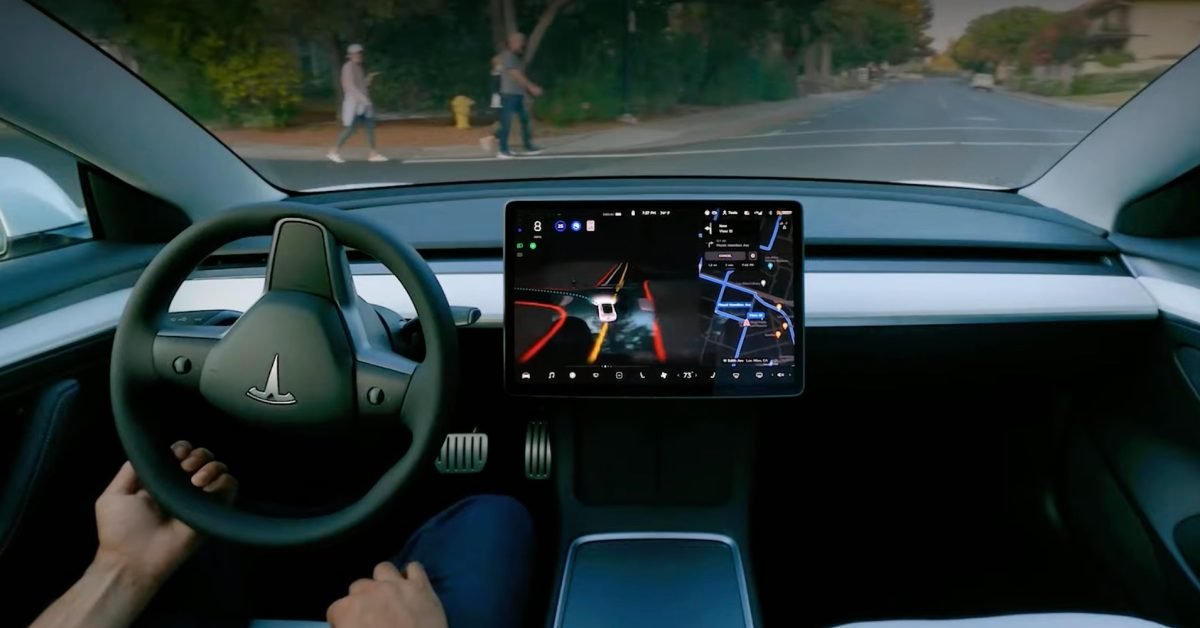Tesla’s ‘Monitored Full Self -driving’ (FSD) in customer vehicles has not improved throughout the year, based on the best available data previously praised by CEO Elon Musk.
Now Musk is pointing to having to wait until later in the year, but wait for what?
Tesla’s last major FSD update, V13, was released in December 2024.
Musk had previously claimed that V13 would enable “an increase of 5 to 6x in miles between release compared to V12.5.”
The car manufacturer never released any release data to prove any improvement. Therefore, we have had to rely on crowddsourced data. There is a particular data set that Musk itself shared positively, which suggests that the limited data set is somewhat reflective of what Tesla sees in its own data.
Based on this data set, V13 on Tesla’s HW4 vehicles was a real improvement, but it only brought a 2x improvement in miles between critical release – nowhere near the “5 to 6x” requirement.
As we have reported before, HW3 vehicles are still stuck on the V12, and Musk has admitted that hardware will never support the promised unattended self-driving capacity without plans to correct the situation in sight.
Now, six months after Tesla released V13, the program stagnated as the car manufacturer changed all his efforts to a “Robotaxi” pilot program in Austin, Texas.
Tesla has released a new version, V13.2.9 (left), but it has worked worse than the previous update (V13.2.8 – Right) after over 5,000 miles with data:


The latest data on Tesla FSD V13.2.9 points to 371 miles between critical release.
As we have previously reported, the Robotaxi pilot program in Austin is a movement of the Tesla target post, which has promised that all its customer cars built since 2016 would be able to unattended self-driving with future software updates.
It only operates in a geo -fence area in Austin, where Tesla specifically trains its neural nets to be optimized for the area. Furthermore, it uses “lots of telecommunications operation” to support the fleet, something that cannot be scaled to customer cars.
The hope is that Tesla’s optimization and focus on this pilot project in Austin will eventually result in Tesla improving FSD in customer vehicles.
Musk has now commented on this effort:
It’s a new version of software, but will merge into the main branch soon. We have a more advanced model in the alpha phase that has ~ 4x params but still require a lot of polishing. It’s probably ready for implementation in a few months.
Quick after claiming a 4x increase in parameters, Musk said this would come “later in the year”:
~ 4.5x increase in params must be ready for wide release later in the year. Super frugal use of memory bandwidth, cache exactly what is needed and squeezing microseconds out of everything is needed to maintain the image frequency. And the whole system needs to be retrained.
It is worth noting that Musk’s timelines for FSD releases have historically been extremely late.
The better question is what this long-awaited update brings to Tesla owners?
Electek Tag
It promised and paid for non-monitored self-driving? No. The “unattended” self -driving that Tesla is launched as part of the pilot program in Austin cannot be transferred to the customer’s fleet. It is the geoftet in a small area around Austin, Texas, and it depends on telecommunications operation that is not scaled to millions of vehicles as Tesla promised.
It is also important to note that this is not the first time that Musk has promised a significant increase in parameters. The CEO said the FSD V12.5 on HW4 was a “5x increase in parameters” and it was quite disappointing.
FSD V12.5 on HW4 (left) only brought an increase of 22% in miles between critical release compared to V12.3 (right):


In fact, kilometers fell between critical release with other V12.5 -Point updates, and it eventually ended at 184 miles between critical release, markedly below V12.3:

Therefore, it is difficult to get too excited about a new “~ 4.5x increase in parameters” when it was what happened last time musk required it.
In addition, Musk declared at the time that HW4 could support a “8x increase in parameters” and it was around this time that he began to express less confidence in his comments about HW3.
It took another 6 months before he finally admitted that HW3 would not support unattended self -driving, and Tesla basically stopped making any significant updates on the hardware page.
Tesla is also fast approaching the limits of HW4 with recent updates.
I think it becomes clear that the Robotaxi launch in Austin is just another distraction from the fact that Tesla cannot deliver its promise to earn millions of vehicles delivered since 2016 capable of “unattended self-driving.”
I am sure that the effort will result in improvements in FSD in customer vehicles later in the year, but it will not be to the level needed to achieve unattended self -driving without telecommunications operation, which in turn is not scalable.
If Tesla can get closer to 1,000 miles between critical release, it would be nice, but 99% of the value of FSD is at level 4-5 unattended self-driving and we won’t even be close to it. And that’s what people paid for.
FTC: We use income that earns Auto -connected links. More.
